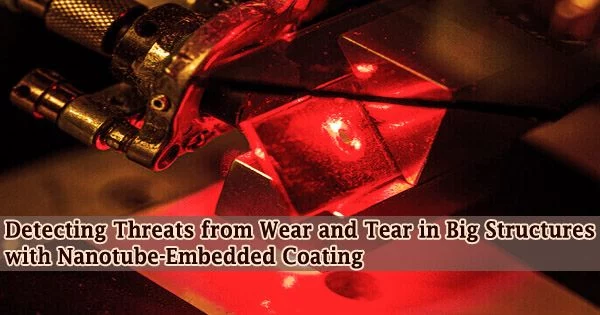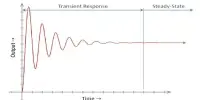At Rice University, a strain-sensing smart skin was created that can monitor and identify damage to big structures using extremely microscopic structures called carbon nanotubes.
Rice first described “strain paint” in 2012, which makes advantage of the fluorescent qualities of nanotubes to demonstrate when a surface has been distorted by stress.
The multilayered coating can now be applied to huge objects, such as bridges, buildings, ships, and airplanes, where high strain poses an invisible threat. It is part of a non-contact optical monitoring system known as S4.
The effort, which is being headed by structural engineer Satish Nagarajaiah, chemist Bruce Weisman of Rice University, and graduate student Wei Meng as the lead author, was inspired by Weisman’s discovery in 2002 that semiconducting carbon nanotubes fluoresce at near-infrared wavelengths.
In the years that followed, he created optical tools to investigate the chemical and physical characteristics of nanotubes, including spectroscopic strain effects in 2008.
In 2004, Nagarajaiah independently devised and created a non-contact optical strain sensor employing carbon nanotube films attached to structural components using epoxy and measured with Raman spectroscopy.
When Weisman and Nagarajaiah discovered that single-walled carbon nanotubes embedded in a polymer and bonded to a structural member will experience the same strain and can report it optically through spectral shifts in their near-infrared fluorescence, their separate research paths came together into a single project in 2008. They published their findings in a publication in 2012.
“Strain measurements are often made as part of safety-related inspections,” Weisman said. “That technical community is rightfully conservative, because their measurements must be reliable.”
“So we need to overcome skepticism about new methods by proving that ours is as valid as the established ones. This paper presents our method’s credentials as a serious strain measurement technology,” he said.
There’s one additional advantage of S4 over DIC that we hadn’t appreciated until recently. That’s the fact that to get good results from DIC requires a high level of expertise on the part of the operator. Companies tell us that only their engineers are qualified to use it. It’s simple to take the data, but the interpretation requires a lot of judgment.
Bruce Weisman
Details of the next-generation, non-contact system appear in Nature’s Scientific Reports.
Two technologies have been utilized for strain mapping: physical gauges fastened to structures and digital image correlation (DIC), which compares images of surfaces with embedded “speckles” taken over time.
Weisman said S4 easily stands up to DIC. Better yet, the two techniques can work together.
“We wanted to make a direct comparison to DIC, which is the only commercialized mapping method for strain out there,” he said. “It’s used in a number of industries, and people have a fairly high level of confidence in it.”
“To demonstrate that our method can stand side by side with it and get results that are similar or better, Wei devised a method to incorporate S4and DIC so both techniques can be used simultaneously and even complement each other,” Weisman said.
The skin consists of three layers, each of which is arranged differently depending on the surface it covers. The DIC speckles are often painted over an opaque primer that is painted beforehand. The base is separated from the nanotubes by the second layer of clear polyurethane.
Finally, a spray of the individually coated, toluene-suspended sensor layer of nanotubes is applied. As the toluene evaporates, a layer of nanotubes bonded to the structural element forms a thin sensing layer.
The skin can be kept active for years by adding an extra protective layer on top. A reader is also necessary for the system; in this example, a tiny visible laser is used to excite the nanotubes and a portable spectrometer is used to determine their degree of strain.
Meng conducted tests on I-shaped acrylic bars with a hole or a cutout, on concrete blocks and aluminum plates with holes punched into them to focus strain patterns, and carefully compared S4 to both DIC and computer simulations.
In every instance, S4 provided a high-resolution, precise image of the stressed specimens that was on par with or superior to the results from the contemporaneous DIC. Concrete measurement presented an optical problem.
“We found that cement in the concrete has intrinsic near-infrared emission that was interfering with our strain measurements,” Nagarajaiah said. “Wei spent an enormous amount of time, especially during the pandemic, carefully working on a new architecture to block those signals.”
Rather than the usual white base layer, a black base that also holds the speckles served the purpose, he said.
“There’s one additional advantage of S4 over DIC that we hadn’t appreciated until recently,” Weisman said. “That’s the fact that to get good results from DIC requires a high level of expertise on the part of the operator. Companies tell us that only their engineers are qualified to use it. It’s simple to take the data, but the interpretation requires a lot of judgment.”
“Our method is quite different,” he said. “It’s nearly as easy to take the data, but the analysis to get the S4strain map is automatic. In the long run that will be an advantage.”
“I have no doubt that this is a state-of-the-art strain-mapping method,” Nagarajaiah said. “We’ve tested it on structural members made of metals, plastics and concrete with complex micro-cracks and subsurface damage, and it works in all cases. I believe we’ve reached the stage where it’s ready for implementation, and we are engaging with industry to learn how it can help them.”
Rice research scientist Sergei Bachilo and graduate student Ashish Pal are co-authors of the study. Weisman is a professor of chemistry and of materials science and nanoengineering. Nagarajaiah is a professor of civil and environmental engineering, of materials science and nanoengineering and of mechanical engineering.
















